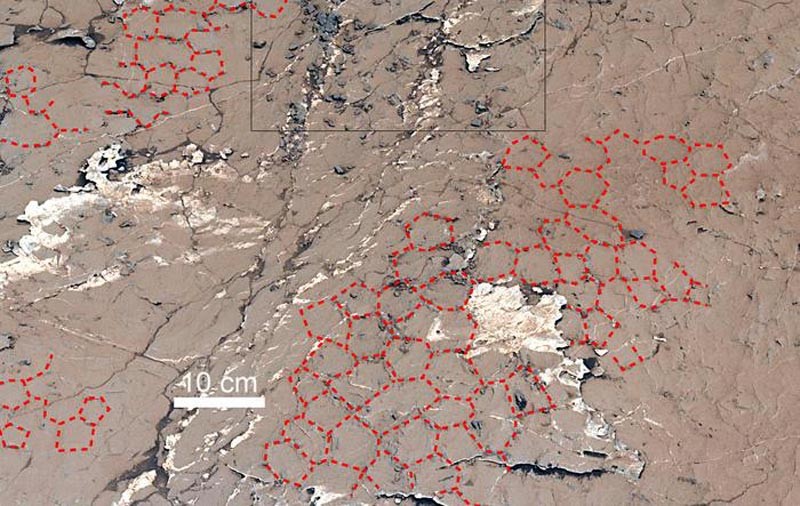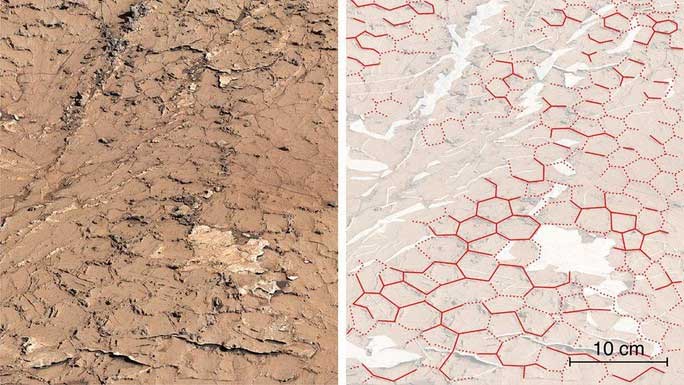In a groundbreaking discovery that is reshaping our comprehension of Mars, NASA’s Curiosity rover has uncovered peculiar structures resembling beehives buried beneath the Martian surface. This revelation carries profound implications for our ongoing quest to demonstrate the potential for life beyond Earth.

Recently published in the esteemed journal Nature, a study spearheaded by the National Center for Space Studies (CNRS) in the United States unveiled that the unusual formations captured by NASA’s Curiosity rover serve as vivid clues to the possibility of life.

“This marks the first tangible evidence demonstrating that Mars’ ancient climate underwent regular cycles of wet and dry conditions similar to Earth’s, a crucial factor for the evolution of molecular processes conducive to life,” stated Dr. William Rapin, a planetary scientist from CNRS.

The abnormal structures identified by Curiosity on Mars appear as fissures akin to those found in sun-baked Earthly lake beds, hinting at a past environment conducive to life. These formations, resembling beehive-like networks of interwoven cracks, were discovered on the slopes of the towering 5-kilometer-high Mount Sharp within Gale Crater, an immense depression on the Martian surface.
NASA elucidates that these “beehive” formations comprise a mosaic of ancient mud cracks, dating back 3.8 to 3.6 billion years, coinciding with a period when previous NASA studies suggested Mars was abundant with water akin to Earth.
Situated above a region rich in clay deposits—an ancient lake bed—and beneath an area abundant in sulfate, remnants of evaporated water, these formations bear testament to multiple wet and dry cycles. This indicates a dynamic environment where vast expanses transitioned between periods of wetness and aridity, akin to Earth’s geological processes.
Furthermore, these structures exhibit traces of sulfate, corroborating their intermittent wet and dry history. This expansive region once witnessed the ebb and flow of ancient lakes, mirroring Earth’s hydrological cycle.
Significantly, this region has also yielded traces of organic compounds, potentially indicative of past life. However, conclusive evidence linking these organic compounds to biological activity remains elusive.
The demonstrated wet-dry cycles serve as crucial missing links in the quest to unravel Mars’ enigmatic past and its potential for harboring life. This discovery underscores the importance of understanding Mars’ geological evolution and its implications for the search for extraterrestrial life.
As NASA continues its exploration endeavors, each revelation brings us closer to unraveling the mysteries of the Red Planet and, perhaps, discovering signs of life beyond our home world. The discovery of beehive-like structures beneath Mars’ surface marks a significant milestone in humanity’s quest to comprehend the cosmos and our place within it.




